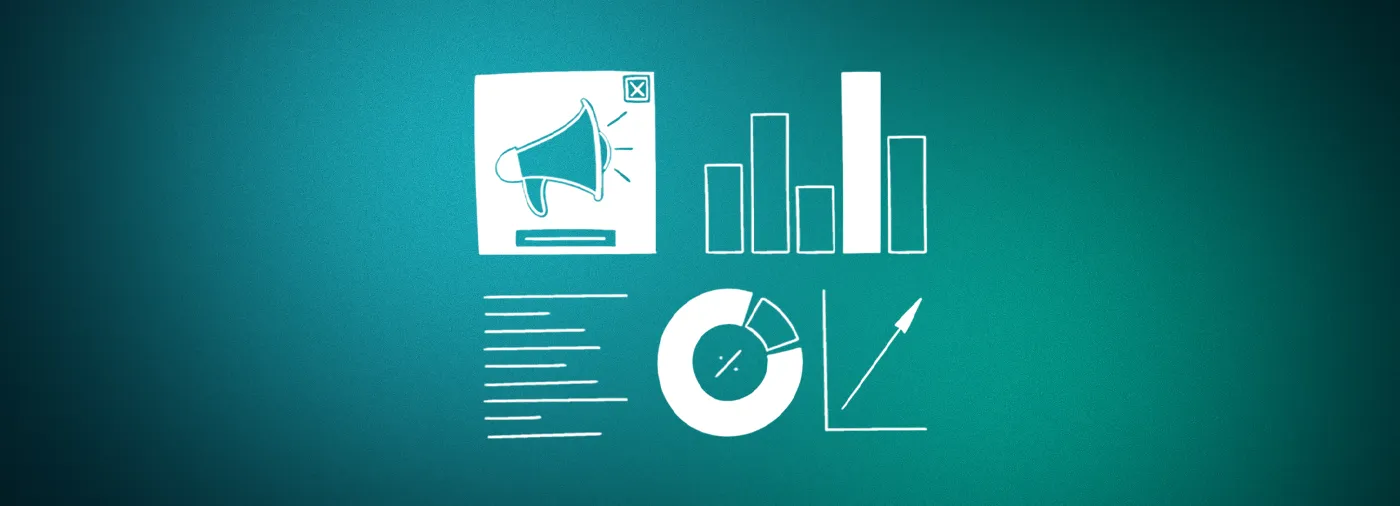LinkedIn has firmly established itself as the leading platform for B2B marketing and professional networking, offering attractive opportunities for connecting with decision-makers, industry leaders, and potential clients. In Bulgaria, as well as globally, using LinkedIn advertising is a valuable tool for businesses aiming to strengthen their brand, generate leads, and increase revenue. In this article, we explore the intricacies of creating, optimizing, and managing LinkedIn ad campaigns, while providing strategies to maximize return on investment (ROI).
The Potential of LinkedIn Ads for Businesses
The true power of LinkedIn lies in its ability to connect businesses with a highly engaged and professional audience. With over 1 billion users globally and a strong presence in Bulgaria, the platform offers a unique opportunity to target specific groups by job title, industry, company size, and more. Unlike other social networks, LinkedIn is primarily used for professional communication and business development, making it an ideal environment for B2B marketing.
Why does this matter? Imagine a Bulgarian software company trying to expand its client base. Traditional advertising may reach a broad audience, but LinkedIn allows them to target specific IT managers or CTOs in their desired industries. This level of precision is invaluable for businesses focused on B2B sales.
Key Advantages of LinkedIn Ads Over Other Platforms
LinkedIn offers several distinctive advantages that make it a powerful tool for B2B marketing:
Precision Targeting
LinkedIn’s rich professional data allows for highly detailed targeting, ensuring your ads reach the right audience. You can target based on job title, industry, company size, skills, and even group memberships.
Example: A marketing agency in Sofia can target marketing directors in the financial industry within a specific radius, ensuring their message reaches the most relevant professionals.
High-Quality Leads
LinkedIn users are typically professionals actively seeking business opportunities and niche content, leading to higher-quality leads compared to other platforms.
Example: A company offering Cloud solutions can use LinkedIn lead gen forms to gather detailed contact information from interested professionals.
Diverse Ad Formats
LinkedIn offers a variety of ad formats, including sponsored content, sponsored messages, text ads, and video ads, allowing you to tailor your campaigns to specific objectives.
Better ROI for B2B Businesses
The high-quality leads and precise targeting opportunities on LinkedIn often translate into more sales and revenue for B2B businesses within the network.
LinkedIn Ad Formats and How to Use Them
LinkedIn offers a range of ad formats, each designed to achieve specific marketing goals:
Sponsored Content
These ads appear directly in LinkedIn’s feed, among organic content. They are ideal for driving engagement, generating leads, and increasing brand awareness.
Example: A cybersecurity company can sponsor an article on the latest data breach trends, positioning itself as a thought leader and attracting interest from potential clients.
Sponsored InMail
These personalized messages are delivered directly to your target audience’s LinkedIn inbox. They are effective for lead generation and promoting events.
Example: A recruitment agency can send personalized InMail messages to HR managers, promoting its services for finding top talent.
Text Ads
Simple text ads appear in the right sidebar of LinkedIn’s desktop interface. They are a more budget-friendly option for advertising on LinkedIn and are commonly used by businesses with a higher sensitivity to advertising costs.
Example: A small business can use text ads to promote an upcoming seminar or webinar.
Video Ads
Video ads are highly engaging and effective for showcasing products, services, and brand storytelling. They can be used to increase brand awareness, generate leads, and drive website traffic.
Dynamic Ads
These ads leverage LinkedIn user information to personalize the ad for each viewer. They can be used to promote job opportunities, follow company pages, or showcase user-generated content.
Example: A company can use dynamic ads to promote open job positions to professionals with the right skills and experience.
Creating a Successful LinkedIn Ad Campaign
Creating a successful LinkedIn ad campaign requires careful planning and execution:
Define Your Campaign Goals
Clearly define your campaign objectives, whether it’s lead generation, driving traffic to your website, or raising brand awareness.
Identify Your Target Audience
Use LinkedIn’s targeting options to create a detailed profile of your ideal customer. Consider factors such as job title, industry, company size, and more.
Learn More: How to Define Your Target Audience
Create Compelling and Impactful Ad Creatives
Craft engaging ad copy and visuals that resonate with your target audience. Use clear and concise language, and highlight the benefits of your product or service.
Example: An ad for a marketing automation tool might highlight how it saves time and increases the efficiency of marketing professionals.
Set Your Budget and Bidding Strategy
Determine your budget and choose a bidding strategy that aligns with your campaign goals. Options include cost-per-click (CPC), cost-per-thousand impressions (CPM), and cost-per-send (CPS).
Monitor and Optimize Your Campaigns
Continuously monitor your campaign’s performance and make adjustments as necessary. Track key metrics such as click-through rate (CTR), conversion rate, and cost per lead (CPL). If your CTR is low, experiment with different ad creatives or targeting options.
Measuring Success and Optimizing LinkedIn Ad Campaigns
To ensure your LinkedIn ad campaigns are delivering results, it's important to track key performance indicators (KPIs) and optimize for maximum return on investment (ROI):
LinkedIn Insight Tag
The LinkedIn Insight Tag is a tool that allows you to track conversions from your ads and gain insights into the behavior of LinkedIn users who visit your site. It’s essential for running remarketing campaigns and understanding user behavior.
Key Metrics
- CTR: Measures the percentage of users who click on your ads.
- Conversion Rate: Measures the percentage of users who complete a desired action, such as filling out a lead form or requesting a quote.
- CPL: Measures the cost of acquiring a lead.
- ROI: Measures the return on investment for your advertising spend.
A/B Testing
Experiment with different ad creatives, targeting options, and bidding strategies to determine what works best for your business and specific audience. Before planning your ad campaign, be ready to invest time and budget to gather enough data for optimization.
Advanced LinkedIn Ads Strategies
To take your LinkedIn advertising to the next level, you need a solid advertising history and sufficient data to make informed decisions. If you have this foundation, consider these advanced strategies:
- Account-Based Marketing (ABM): Target ads to specific companies and decision-makers within their teams (ideal for larger businesses).
- Retargeting/Remarketing: Reach users who have previously interacted with your website or LinkedIn page.
- LinkedIn Lead Gen Forms: Generate leads directly from your LinkedIn ads.
- LinkedIn Matched/Lookalike Audiences: Upload your own contact list to target highly specific users with tailored content (but at a higher cost than standard ads).
LinkedIn advertising holds immense potential for B2B marketers to reach their target audience and achieve their business goals. It's important to understand the platform’s core principles and algorithm, stay updated on new features, and effectively manage your advertising budget. For additional tips, personalized consulting, and campaign planning, you can reach out to the team at DGTalents.




